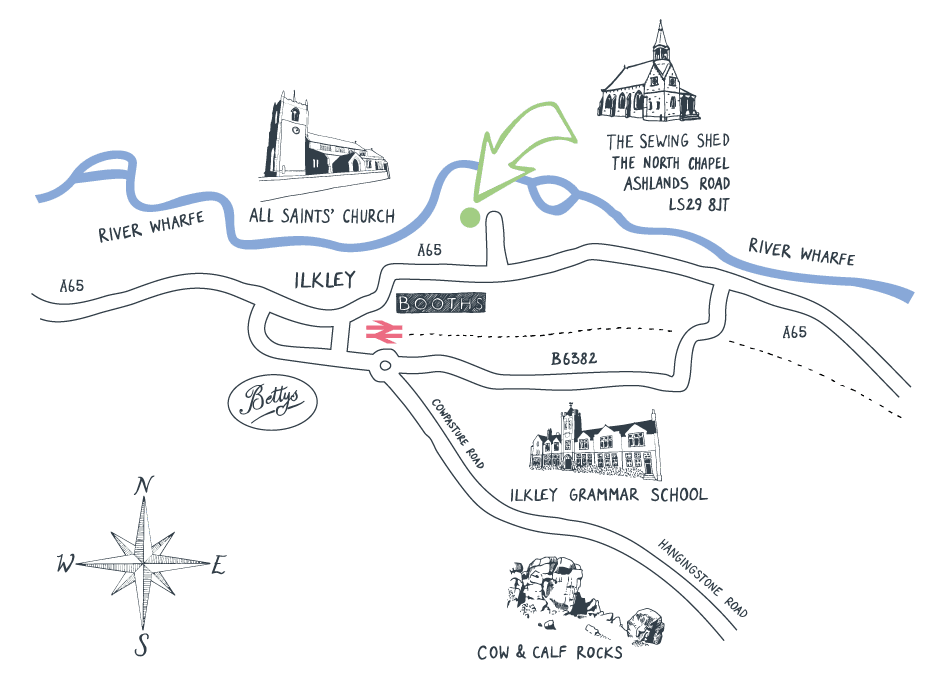
Address: The North Chapel, Ashlands Road, Ilkley, LS29 8JT





Please accept my apology of posting this blog again (although updated) as at each cycle of six week classes I meet new students who have been home dressmakers who are confused by the range of patterns available to them, or new sewers that just don’t know where to start. So I have updated the post for recent students and new sewers who have yet to discover the fun at The Sewing Shed.
The high street was re-sized in the 1970s in the UK, as better nutrition and a more varied diet was developing larger female silhouettes with different proportions to our mothers and grandmothers. Dressmaking patterns were not necessarily re-sized to take into account the more modern figures. This is why on the reverse of many patterns bought today we are one, two or even three sizes larger than our ‘usual’ high street dress size. This can be said for Simplicity, New Look, Burda, Vogue, Butterick and includes Emma Garry. Please also be wary of Merchant & Mills as their garments are unstructured giving an over sized look to the finished garment.
For beginners learning dressmaking I recommend the following patterns, particularly Colette as these are more true to the dress size that we are used to. There are also more artisan makers that sell at sewing shows and on line for example, Amy Butler, Sew Over It, Simple Sew and Tilly and the Buttons. I can personally vouch for Amy Butler, Avid Seamstress, Colette and Simple Sew having used many of their patterns in my classes. I stock a carefully selected range of new lesser known pattern brands; Colette, Sew Liberated, Made by Rae as well as bag patterns by Noodlehead and children’s patterns by Oliver + S and Made by Rae.
For all sewing patterns you should reach for the tape measure and use these measurements when deciding which pattern to buy and which size garment to make.


February 22, 2017